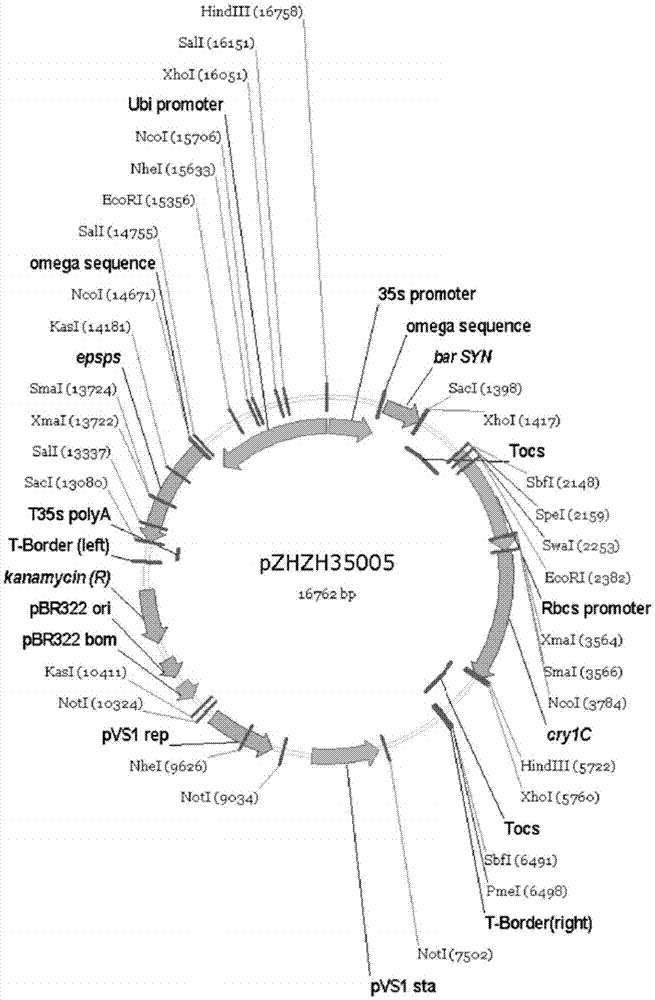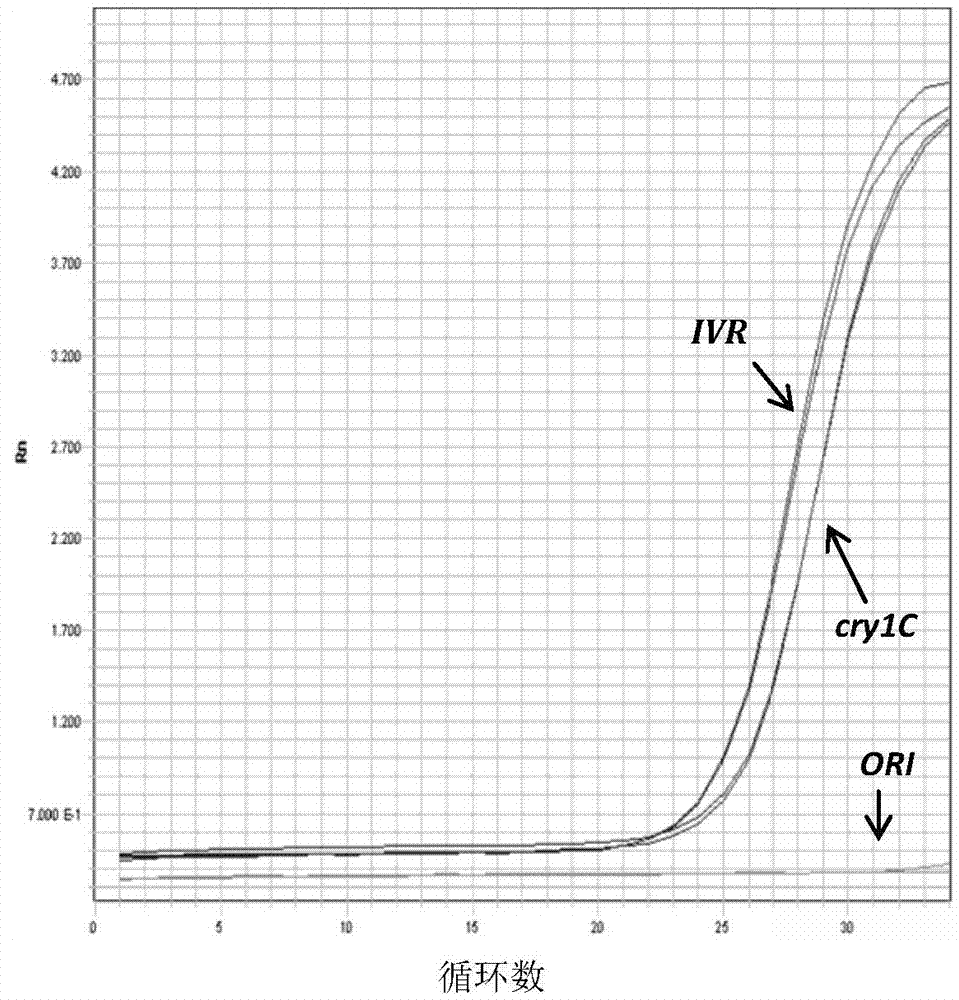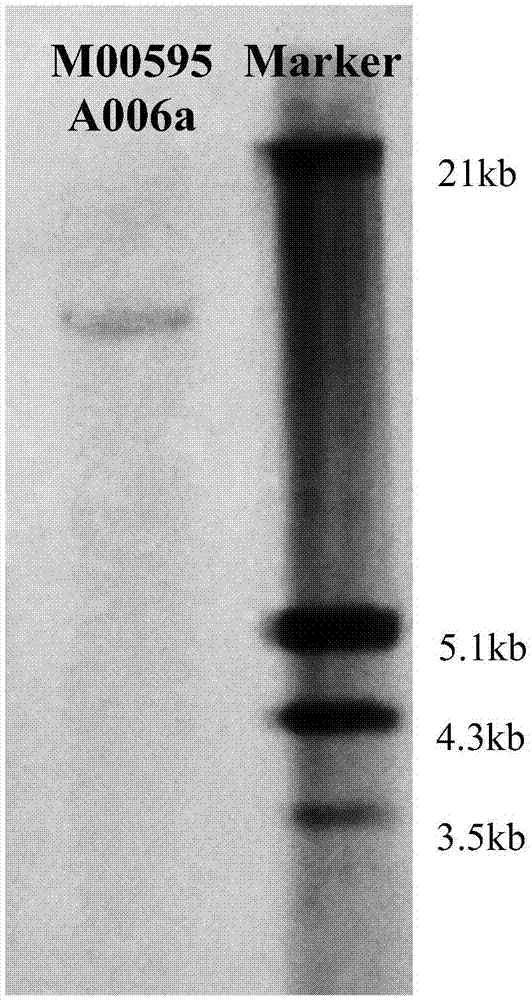Anti-insect anti-herbicide corn conversion event and creation method and detection method thereof
A transformation event, corn technology, applied in the field of plant biotechnology and plant breeding, can solve problems such as long residual period, no selectivity for weeding, and inability to be directly used in the growing period of crops
- Summary
- Abstract
- Description
- Claims
- Application Information
AI Technical Summary
Problems solved by technology
Method used
Image
Examples
Embodiment 1
[0076] Example 1 Obtaining and Molecular Detection of Maize Transformation Event M00595A006a
[0077] The immature embryos of maize inbred line Xiang 249 with a size of about 1mm were stripped and pollinated about 10 days ago, infected with Agrobacterium containing the constructed transformation vector pZHZH35005, co-cultured for 3 days, and rested for 6 days. Next, the culture medium containing 5 mg / L and 8 mg / L bialafosine was used for one round of screening respectively. The screened resistant calli were differentiated into seedlings, and after rooting, they were transferred to soil for growth and samples were taken for molecular detection.
[0078] The results of molecular testing showed that the RQ value of exogenous gene cry1C of T0 transformed seedlings with sample number 2334 was 0.62, while the RQ value of the wild-type control sample was 0, and the Ct value of skeleton element Ori amplification was 30, so the transformation Seedlings are positive, low-copy, high-q...
Embodiment 2
[0119] Example 2 Breeding and Field Performance of Maize Transformation Event M00595A006a
[0120] As described in Example 1, the recipient material of the transformation event in this example is the maize inbred line Xiang 249. After obtaining the transformation event of the T0 generation (single-copy insertion and no vector skeleton contamination), planting management, the flowering period is based on the The transformation event was the female parent, and the excellent backbone wild-type maize inbred line Zheng 58 was the male parent, and the F1 seeds of the T1 generation were obtained by crossing. Afterwards, the T1 generation seeds were germinated, sprayed with glufosinate, and the glufosinate-resistant and sensitive plants were selected in line with the Mendelian genetic law, and samples were taken to detect the genotype, and the target single plant was selected for backcrossing with Zheng 58 as the male parent. , to harvest the BC1F1 seeds of the T2 generation; after ...
Embodiment 3
[0137] Example 3 Isolation of left (5') and right (3') flanking sequences of maize transformation event M00595A006a
[0138] In general, DNA primer sequences and methods for detecting transgenic plants are simple and consistent, and these detection methods usually focus on frequently used gene expression elements, such as promoters, terminators, and marker genes, because for many transformation vectors, the coding sequence Zones are interchangeable. Therefore, these methods cannot be used to distinguish between constructs that differ only in their coding sequence, or between different transformation events, especially those generated using the same transformation vector, unless they are chromosomally adjacent to the inserted heterologous DNA. The sequence of the DNA, the "flanking DNA", is known.
[0139] To this end, in this example, the 5' flanking sequence of maize transformation event 00595A006a was isolated and identified by Adaptor-PCR.
[0140] After genomic DNA ext...
PUM
 Login to View More
Login to View More Abstract
Description
Claims
Application Information
 Login to View More
Login to View More - R&D
- Intellectual Property
- Life Sciences
- Materials
- Tech Scout
- Unparalleled Data Quality
- Higher Quality Content
- 60% Fewer Hallucinations
Browse by: Latest US Patents, China's latest patents, Technical Efficacy Thesaurus, Application Domain, Technology Topic, Popular Technical Reports.
© 2025 PatSnap. All rights reserved.Legal|Privacy policy|Modern Slavery Act Transparency Statement|Sitemap|About US| Contact US: help@patsnap.com



